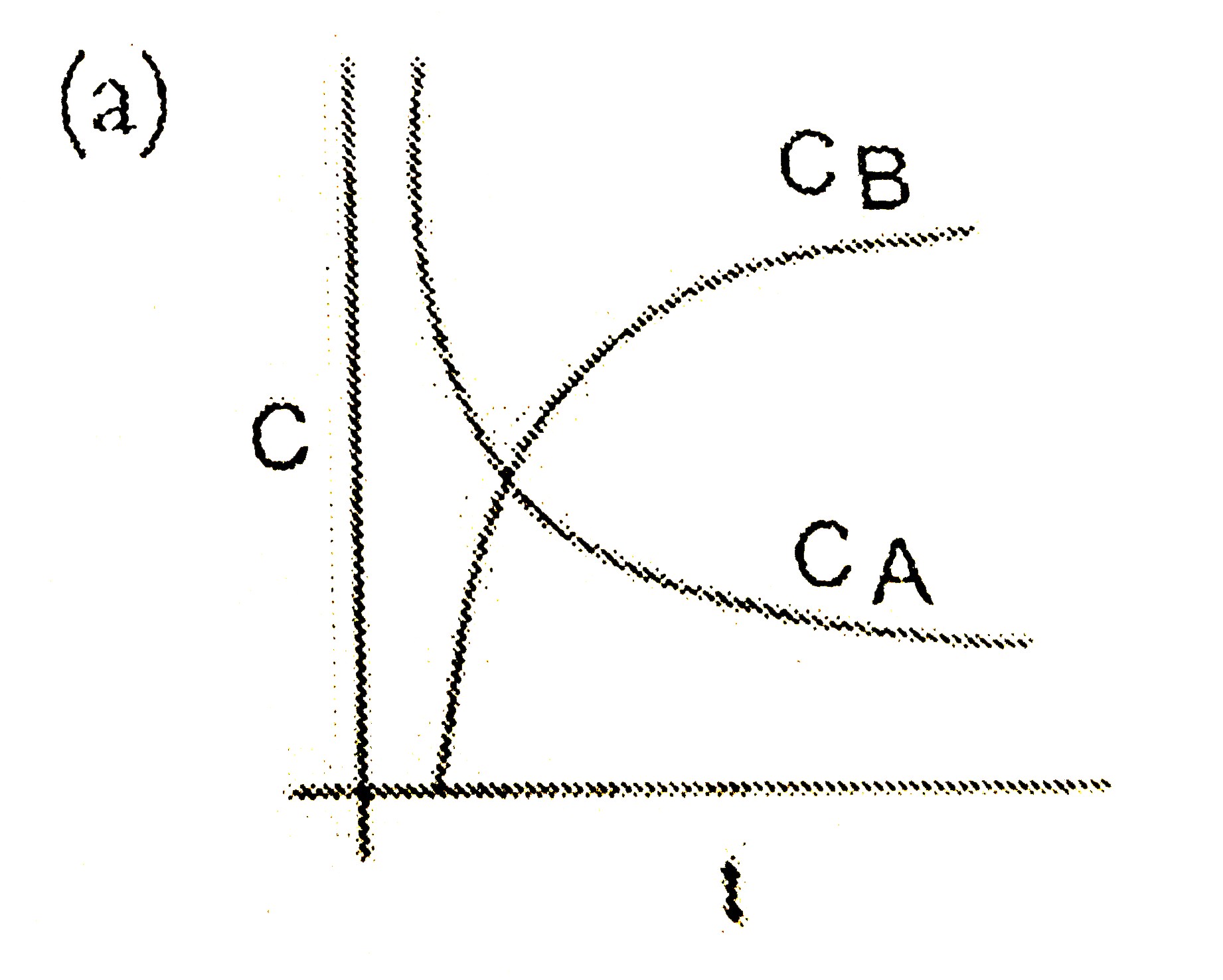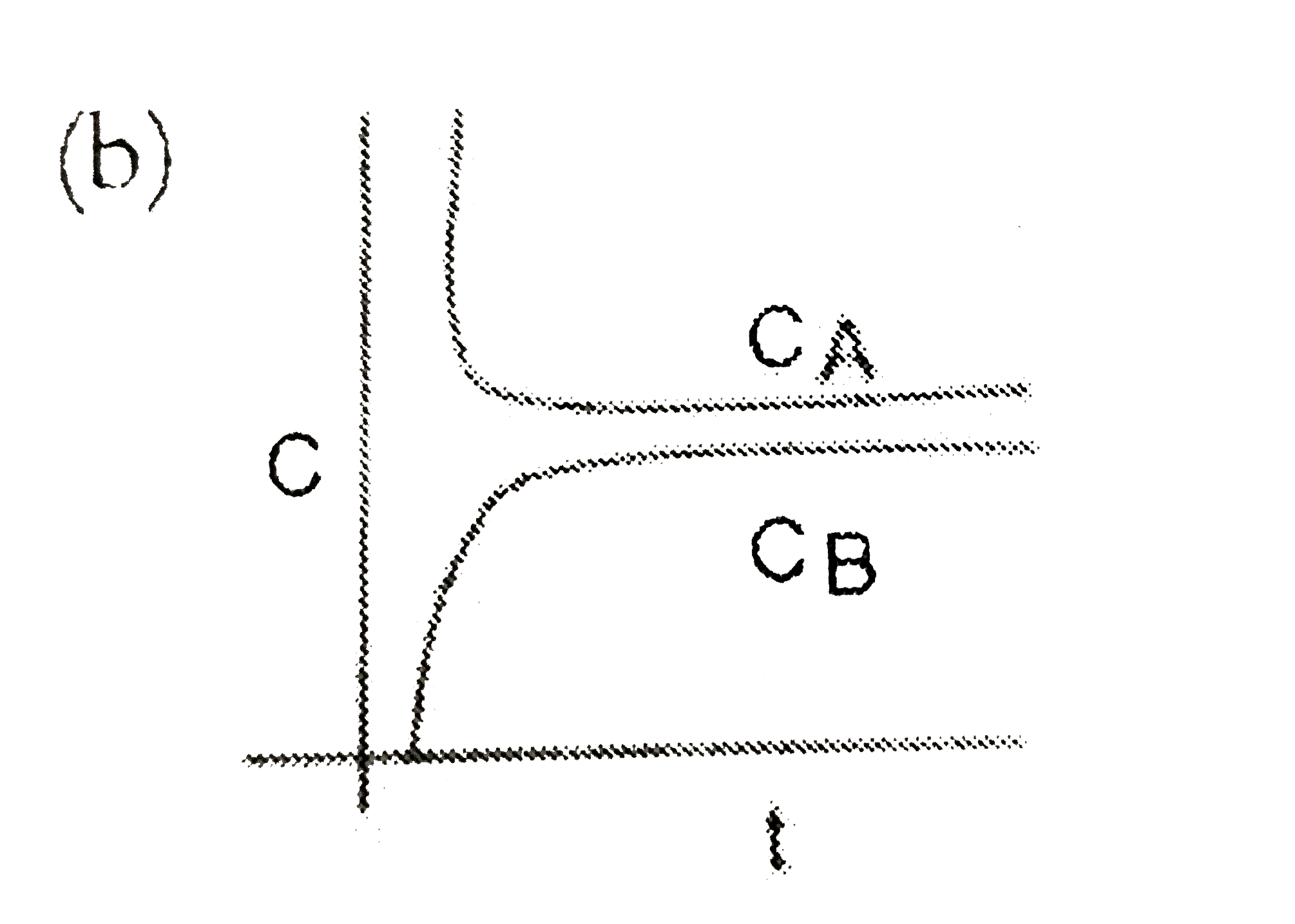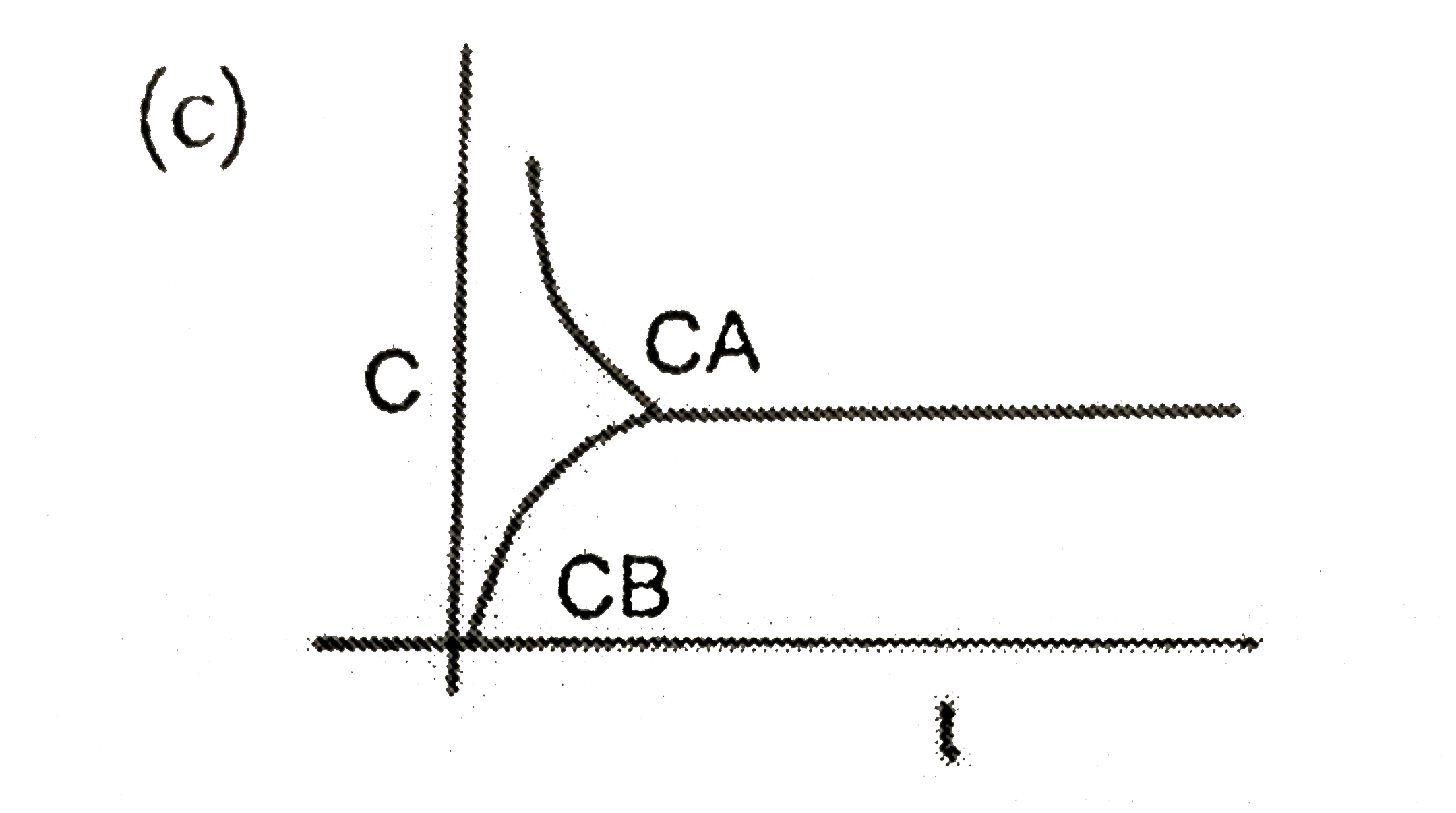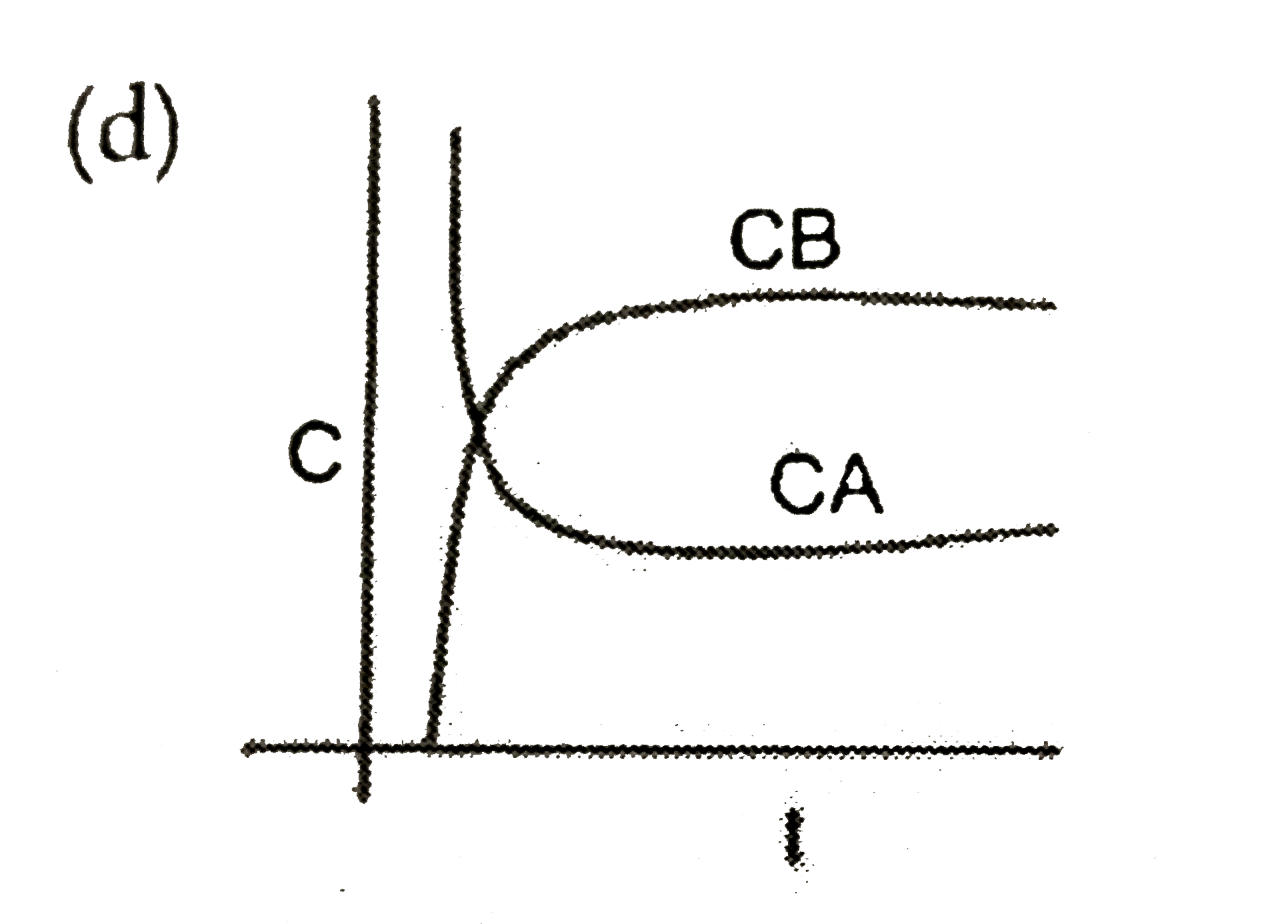Explore topic-wise InterviewSolutions in .
This section includes InterviewSolutions, each offering curated multiple-choice questions to sharpen your knowledge and support exam preparation. Choose a topic below to get started.
| 701. |
Which of the following statements do not express the properties of a solid? (i) The particles of a solid have high energy. (ii) The interparticle forces of attraction in a solid are very weak. (iii) A solid melts at a fixed temperature. (iv) The fluidity of a solid is very high. |
|
Answer» (i) and (II) only |
|
| 702. |
Which seperation techniqueswill you apply for the Seperation of theButter from Curd ? |
| Answer» SOLUTION : CENTRIFUGATION | |
| 703. |
Which of the following does not contain double bond? |
|
Answer» `CO_(2)` |
|
| 704. |
Which seperation techniques will you apply for the Seperation of the WheatGrains from Husk? |
| Answer» SOLUTION :SEDIMENTATION | |
| 705. |
Which are the particles whose numbers you can find out if you know the atomic number of an atom? |
|
Answer» |
|
| 706. |
Which of the following substance differs (isolates)? |
|
Answer» Brass |
|
| 707. |
Total Number of electrons that can be accommodated in an orbit is given by ……………….. . |
|
Answer» |
|
| 708. |
Which seperation techniqueswill you apply for the Seperation of theoil from water ? |
| Answer» SOLUTION :SEPARATION | |
| 709. |
One of the following processes is not a step involved in the water cycle operating in nature |
|
Answer» Evaporation |
|
| 710. |
When 3.0g of carbon is burnt in 8.00 g oxygen, 11.00g of carbon dioxide is produced. What mass of carbon dioxide will be formed when 3.00g of carbon is burnt in 50.00g of oxygen? Which law of chemical combination will govern your answer. |
|
Answer» Solution :3.0g of carbon combines with 8.0 g of oxygen to give 11.0 of `Co_(2)` If 3 g of carbon is BURNT in 50 g of oxygen, then 3g of carbon will react with 8 gofoxygen. The remaining 42 gofoxygen will be left un-reactive. In this CASE also, only 1lg of CO, will be formed. The above answer is governed by the law of constant proportions. |
|
| 711. |
The vapour density of an unsaturated aliphatic : hydrocarbon 'X' is 34. Write the structural formula of X and its succeeding homologue Y Also write the position isomers of X and Y. |
|
Answer» SOLUTION :(i) calculation of molecular WEIGHT of X (ii) calculation of molecular formula of hydrocar- bon from molecular weight (III) identiflcation of type ofhydrocarbon based on formula' (iv) identification of possible ways the atoms can - be arranged (v) identiflcation ofsucceeding homologue of the above hydrocarbon (vi) number of POSITION isomers of succeeding homologue based on number of carbon atoms |
|
| 712. |
The total number of electorns present in the first to and the last two shells 's is the same for andatom of an element X. The sum of the electornss presentin ssecond fourth and fifith shells is equal to the number of electons present in the third shell and the fifth shell is the valence shell indentify x nad predict its position in the periodic table |
|
Answer» Solution :ELECTRONIC configuration of element X is `{:(k,,L,,M,,N,,O),(2,,8,,18,,8,,2):}` The elementx is strontium with atomic NUMBER 38 It belongs to the fifth perid and 2nd group (IiA) or group 2 |
|
| 713. |
What is catenation? How does carbon form catenated compounds? |
|
Answer» SOLUTION :Catenation is the binding of an element to itself or with other elements through covalent bonds to form open chain or closed chain compounds. Carbon is the most COMMON element which undergoes catenation and forms long chain compounds. Carbon atom links repeatedly to itself through covalent bond to form linear chain, branched chain or ring STRUCTURE. This property of carbon itself is the reason for the presence of large NUMBER of organic carbon compounds. So organic chemistry deals with catenated carbon compounds. 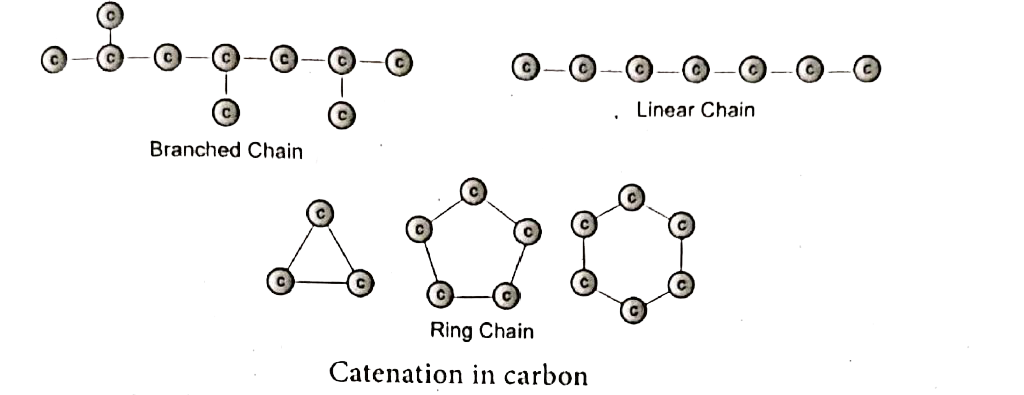
|
|
| 714. |
Which of the following formulae is correct ? |
| Answer» Solution :`Na_(3)N` | |
| 715. |
The volume of a gas expands on heating. |
|
Answer» |
|
| 716. |
Write the equilibrium expressions (K_(C )) for the decomposition of 2 moles of sulphur trioxide and relate it to K_(C ) of the reaction carried out with 1 mole and 4 moles of SO_(3), respectively. |
|
Answer» Solution :`K_(c )` value for the equilibrium REACTION `2SO_(3) implies 2SO_(2)+O_(2)` is `K_(c_(1))`=([SO_(2)]^(2)[O_(2)])/(SO_(3)]^(2))` `K_(c )` value for the equilibrium reaction `SO_(3) implies SO_(2)+(1)/(2)O_(2)` is `K_(c_(2))=([SO_(2)][O_(2)]^(1/2))/([SO_(3)])` `therefore_(c_(2))=K_(c_(1))^(2)` `K_(c )` value for the equilibrium reaction `4SO_(3) implies 4SO_(2)+2O_(2)` is `K_(c_(3))=([SO_(2)]^(4)[O_(2)]^(2))/([SO_(3)]^(4)` `THEREFORE K_(c_(3))=sqrt(K_(c_(1)))` |
|
| 717. |
What is molecular mass ? |
| Answer» Solution :The relative mass of a MOLECULE EXPRESSED in atomic mass units (U) is the MOLECULAR mass. | |
| 718. |
The various components of petroleum products can be separated by fractional distillation. |
|
Answer» |
|
| 719. |
Three students A, B and C were asked to prepare 50% (mass by volume) solution of NaOH. A dissolved 50 g of NaOH in 100 mL water. B dissolved 50g of NaOH in 100 g of water. C dissolved 50 g of NaOH in water to make 100 mL solution. Which one of them has made the desired solution and why? |
|
Answer» Solution :The student C MADE the desired solution. Mass by VOLUME PERCENTAGE of a solution = `("Mass of SOLUTE")/("Volume of solution")xx100` = `50/100xx100=50%` |
|
| 721. |
What is a solvent ? |
| Answer» SOLUTION :The COMPONENT (USUALLY present in large amount) that dissolves the other component is KNOWN as a solvent. | |
| 722. |
The reagment NaOH+CaO is used for |
|
Answer» carbonxylation |
|
| 723. |
Water droplets are seen on the outer surface of a glass containingvery cold water. |
| Answer» SOLUTION :When very cold water is FILLED in a vessel, the water vapour present inair comesin CONTACT with the glass and loses energy. And it gets converted into LIQUID STATE. Hence water droplets are seen on the outer surface of a glass containing very cold water. | |
| 724. |
Were neutrons known when rutherford gave his model of an atom? |
| Answer» | |
| 725. |
Which one of the following does not belong to the group. (Mendeleev, Newlands, Dobreiner, Niels Bohr) |
|
Answer» |
|
| 726. |
Which has more number of atoms, 100 grams of sodium or 100 grams of iron ? (Given : atomic mass of Na = 23 u, Fe = 56 u.) |
|
Answer» Solution :23 g of Na (i.e., 1 MOLE) = `6.022 xx 10^(23)` atoms `:.` 100G of Na = `(100 xx 6.022 xx 10^(23))/(23) = 26.18 xx 10^(23) = 2.618 xx 10^(24)` atoms .......(1) 56g of Fe (i.e., 1 mole) = `6.022 xx 10^(23)` atoms `:.` 100 g of Fe =`(100 xx 6.022 xx 10^(23))/(56) = 10.75 xx 10^(23) = 1.075 xx 10^(24)` atoms .......(2) From (1) and (2), 100 g of Na has more atoms than 100 g of Fe. |
|
| 727. |
Which of the following cannot be concentrated by froth flotation process ? |
|
Answer» ZINC BLENDE |
|
| 728. |
Which of the following statements is ( are ) true ? |
|
Answer» ICE is homogeneous in nature . |
|
| 729. |
Which of the following is a heterogeneous mixture ? Air, Soda water, Soap solution, Brass. |
| Answer» SOLUTION :SOAP solution is a HETEROGENEOUS MIXTURE. | |
| 730. |
What is atomictiy ? |
| Answer» SOLUTION :The number of atoms CONSTITUTING a MOLECULE is KNOWN as its atomicity. | |
| 731. |
Which of the following are chemical changes ? (a) Growth of a plant (b) Rusting of iron ( c) Mixing of iron filings and sand (d) Cooking of food (e) Digestion of food (f) Freezing of water (g) Burning of a candle |
|
Answer» SOLUTION :The chemical changes are as follows: (a) Growth of a plant (b) Rusting of iron (d) COOKING of food (E) Digestion of food (g) Burning of a candle. |
|
| 732. |
Write your observations when dilute sulphuric acid is added to the following: A metal sulphite (potassium sulphite) |
| Answer» Solution :A colourless, ODOURLESS GAS with suffocating smell is evolved which turns acidified POTASSIUM dichromate PAPER green. | |
| 733. |
What is meant by threshold energy ? |
| Answer» | |
| 734. |
What is Full Form of BEC? |
|
Answer» BOHR EVEN Condenser |
|
| 735. |
Zn+2HCl to ZnCl_(2)+....... (a) H_(2) (b) O_(2) (c) CO_(2) |
|
Answer» |
|
| 736. |
The reaction 2 hArr B is started with 2 moles of A in a 1 L container. Which of the following graphs represents the equilibrium of the given reaction, if 40% of the reactant A gets converted to B to attain equilibrium ? |
|
Answer»
|
|
| 737. |
The ratio of the atomic numbers of two elements A and B is 2:3 A is an intery gas the first 3 orbits completely filled. Identify A and B and write their electronic configurations. |
|
Answer» Solution :`ATO` electronic CONFIGURATION `-2,8,18,8`. Thus, the atomic number `=36`. `A:B=2:3` `THEREFORE B=(36xx3)/(2)=54` The electronic configuration of `B=2,8,18,18,8` |
|
| 738. |
The ratio of atomic number of two elements A and B is 1:2 The numebr of electrons present in the valence sheel (3^rd) of A is equal to the difference in the number of electrons present in the other two shells. Steps involved for the calculation of ratio of number of electrons present in a penultimate sheel to anti-penultimate sheel of B are given below : Arrange them in the correct sequence : (1) calculation of atomic number of B (2) calcualtion of valence electrons present in A. (3) calacualtion of atomic number of A. (4)calacualtion of number of electrons present in the penultimate and anti-penultimate shells of B. (5) writing electronic configuration of B. |
|
Answer» 23415 (ii) calculation of atomic number of A (III) calcualtion of atomic number of B (IV) writing electronic configuration of B (v) calcualtion of number of electrons present in the penultimate and anti-penultimate shells of B. |
|
| 739. |
The rate of the forward reaction ____ with time. |
| Answer» | |
| 740. |
The rate of reaction, with respect to reactants, ___ as the reaction proceeds. |
| Answer» | |
| 741. |
The rate of reaction with respect to change in the concentration of products is represented as r=-(Delta d)/(Delta t) |
|
Answer» |
|
| 742. |
The rate of evaporation of a liquid ................... withincrease in humidity . |
| Answer» SOLUTION :DECREASES | |
| 743. |
The rate of evaporation of a liquiddecreases on a rainy day . Give reason. |
| Answer» SOLUTION :On a RAINY day , the HUMIDITY of AIR is increased . So, the RATE of evaporationdecrease . | |
| 745. |
The rate of difusion in gases is faster as compared to solids and liquids. Why? |
| Answer» SOLUTION :A compared to solids and LIQUIDS, theparticles of GASES have high speed and LARGE spaces between them. | |
| 746. |
The rate of diffusion is ……..in gas as compared to that in liquid. |
|
Answer» |
|
| 747. |
The rate of diffusion in liquids is higher than that in solids. |
| Answer» Solution :The particles of matter in the liquid state MOVE freely and have GREATER SPACE between one another as compared to particles in the solid state. It meas, the paticles of liquids are not rigit as compared to that in solids. Hence the rate of diffusion in liquids is HIGHER than that in solids. | |
| 748. |
The rate of an endothermic reaction increases with ____ in temperature. |
|
Answer» |
|
| 749. |
The rate of a reaction is positive when it is measured with respect to ____. |
|
Answer» |
|
| 750. |
The rate for the reaction X to Y is studied at 25^(@)C by varying conditions of reaction.In experiment (i) the rate of reaction is found out to be 5xx10^(-2) mole L^(-1)s^(-1). In experiment (ii) the rate of reaction is found out be 8xx10^(-1) " mole " L^(-1)s^(-1). Account for the veriation in rate of reaction. |
|
Answer» Solution :RATE of reaction depends upon concentration, catalyst, etc., at a GIVEN temperature. The more the initial concentration of reactant, the more is the rate of reaction. Since in experiment (ii), the rate is higher the initial concentration of X could be more. Rate of catalysed reaction is greater than that of UNCATALYSED REACTIN. Since in experiment (ii) , the rate of reaction is higher a POSITIVE catalyst might have been used. |
|
